Cusco
Cusco
Cusco
The Inca’s wisdom and vision of the cosmos still permeates the air of the imperial city of Cusco. Its harmony with nature stands as a lesson to this day. Within the domain of the “Navel of the World” lies the Machu Picchu Historical Sanctuary, the most visited natural protected area in Peru. The sanctuary’s job is to protect the crown jewel of the Incas and one of the wonders of the world.
Cusco shows the county’s natural and cultural heritage at its finest, with archaeological sites whose wonders never cease and a wide variety of wild plants and animals for whom the beautiful city is their last bastion. The capital of the Inca Empire is also crisscrossed by trails: Choquequirao, Lares and Salkantay contain cultural and natural adventures that make it a utopia for those who love adventure sports.
Cusco is also where the majestic and historic Sacred Valley of the Incas can be seen in all its glory, with its ancient fortresses, fertile farmlands, glacier-clad mountains and picturesque towns. On top of it all, it is now possible to stay high up on its sacred mountains and soak in all of its majesty from the skies. UNESCO named the ancient capital of the Inca Empire a World Heritage Site, confirming that one of its most fascinating elements is the fusion of its Incan past and Spanish colonial legacy.
Location
Southeastern mountains of Peru
Capital
Cusco (3399 meters)
Elevation
min.: 532 meters (Pilcopata)
max.: 6384 meters (Nevado del Ausangate)
Climate
Temperature
Max.: 20 °C Min.: 1 °C
Arriving
By land
Lima (vía Arequipa): 1650 km / 26 hr
Lima (vía Abancay): 1105 km / 21 hr
Arequipa: 610 km / 10 hr
Puno: 389 km / 6 hr
By air
Lima - Cusco: 1 hr 15 min
Puerto Maldonado - Cusco: 55 min
Arequipa - Cusco: 1 hr
By rail
Puno - Cusco: 384 km / 10 hr
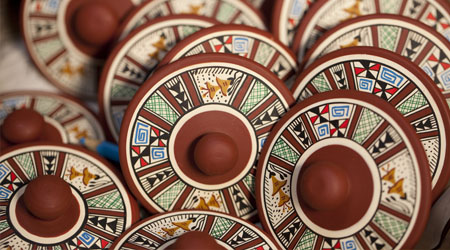
What to buy?
The region’s traditional crafts include fine alpaca wool fabrics, ceramic pieces, carefully prepared images, and silver jewelry that displays Andean motifs. San Blas is the most representative neighborhood for these traditions in the city of Cusco. It is home to the workshops of renowned teachers such as Edilberto Mérida, Antonio Olave, Gregorio Béjar, and the Mendivil Family. Outside the city craft fairs can be found in Corao, Písac, and Chinchero. They are well known for the sale of alpaca fiber and silver jewelry.
What to eat?
In Cusco, gastronomy is history, knowledge, and the adaptation of mankind to the environment. It is also the authenticity of the local cultura and its later fision with the new. Behind each dish are ancestral agricultura, local products, and a regional recipe book. The city offers international and criolla options, as well as the chef’s own creations-which are usually recreations of classic récipes that allow local ingredients to shine and gain exposure.
Local eating and drinking venues known as chicherias and picanterías remain to be discovered by the visitor. Tables are shared and a variety of food is served: fried malaya (steak), zarza de patitas (pig’s trotter), sara lawa (cream of corn), adobo (marinade), soltero de queso /a cheese salad), fried trout, and chicharrón con mote (pork crackling with hominy). Chicha (a corn-based drink) is the essential beverage to accompany and enjoy the meal.
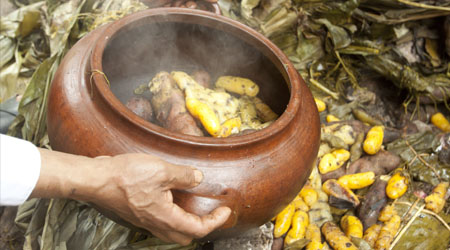
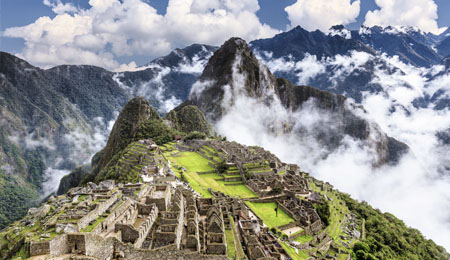
Tours (3 days mínimum recommended stay)
City Tour: Cathedral, Qorikancha, Sacsayhuamán
Maras and Moray
Sacred Valley: Písac, Ollantaytambo, and Chinchero
Machu Picchu with an overnight stay in Machu Picchy village
Vinicunca
Trek to Salkantay
Ausangate
Choquequirao (via Cachora)
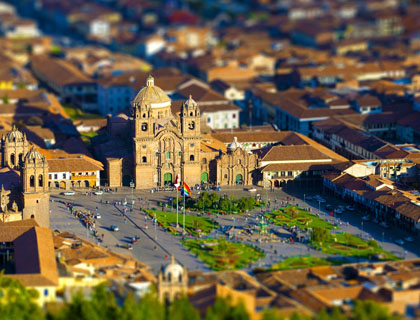
Main Square
During the Inca period the square functioned as a ceremonial site for the annual Inti Raymi (Sun God Festival). It was here that Francisco Pizarro proclaimed the conquest of Cusco. This event led to a transformation in the architecture, with the construction of stone archés and buildings taht still stand today.
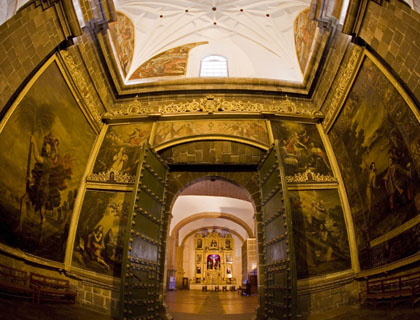
Cathedral
Visiting Hours: Mon-Sun: 10:00 - 18:00 hrs.
Ticket entry.
Renaissance in style, the Capilla del Triunfo (Chapel of Triumph) and the Cathedral were built over the top of Incastructure: the Suntur Wasi temple and the Inca Wiracocha’s palace, respectively. The treasures they hold include embossed silver objects and an important collection of paintings from the Escuela Cusqueña.
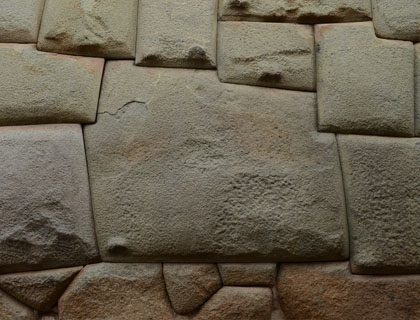
Museum of Religious Art and the Twelve-angled Stone
Location: Cl. Hatunrumiyoc, two blocks from the Main Square.
Ticket entry to the museum.
A wall located on Calle Hatunrumiyoc built over the palace of the Inca Roca contains the outstanding Twelve-angles Stone. It is proof of the meticulousness of Inca engineering.
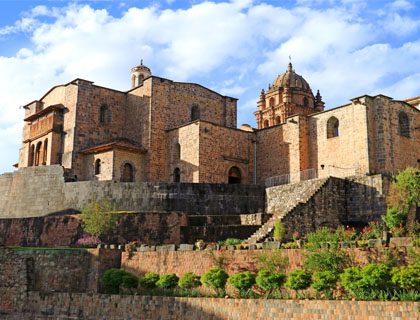
Santo Domingo Temple and Convent (Qorikancha)
Location: Plazoleta Santo Domingo, three blocks from the Main Square.
Visiting Hours: Mon-Sat: 8:30 - 17:30 hrs / Sun: 14:00 - 17:30 hrs.
Ticket entry.
As an important center for worship of the Sun God (Inti), the inner walls of the Qorikancha were covered with gold. The church and the convent were built in 1534 over the existing structure. An art gallery holds canvases from the 17th and 18th centuries.
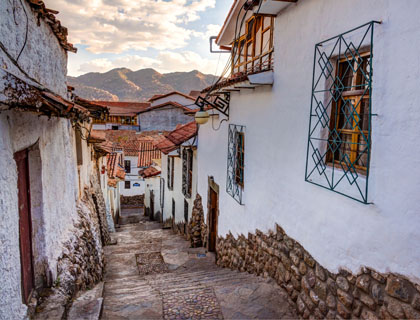
San Blas Neighborhood
Location: 3 blocks from the Main Square.
San Blas is a traditional neighborhood with steep and narrow streets. Many of its colonial houses are home to the workshops of local artisans who open their doors for visitors and show their work.
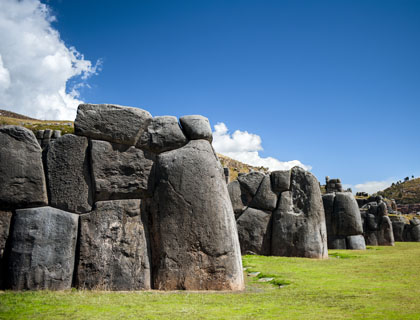
Sacsayhuamán Archaeological Site
Location: 2 km to the northeast of the city of Cusco (15 min. by car or 30 min. on foot).
Visiting Hours: Mon-Sun: 07:00 - 18:00 hrs.
Ticket entry.
Construction of his ceremonial fortress or Inca sanctuary, whose name means “place where the falcon is satisfied”, began in the 15th century and is considered the greatest architectural work produced by the Incas at the height of their civilization. The fortress affords a spectacular panoramic view of the surroundings, including the city of Cusco. The archaeological complex consists of 33 sites.
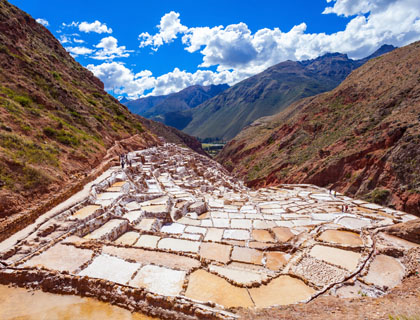
Maras Salt Mines
Location: 58 km from the city of Cusco (1 h 30 min by car).
Ticket entry.
Salt has been extracted here since pre-Columbian times. The mines consist of approximately 3000 pools fed by saline water that is filtered from the ground by the Qoripujio spring. The salt is obtained by means of evaporation. As well as enjoying the beautiful white landscape, the visitor can participate in collection of the salt.
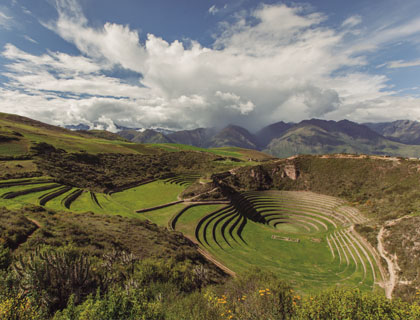
Moray Archaeological Site
Location: 9 km to the northwest of the village of Maras (25 min by car).
Visiting Hours: Mon-Sun: 07:00 - 18:00 hrs.
Ticket entry.
The site consists of slightly elliptical terraced galleries known to local as muyus. The main gallery has a depth of 45 meters and the average height of each terrace is 1.8 meters. Moray was an important agricultural research center for the domestication, acclimatization, and hybridization of wild species to adapt them for human consumption.
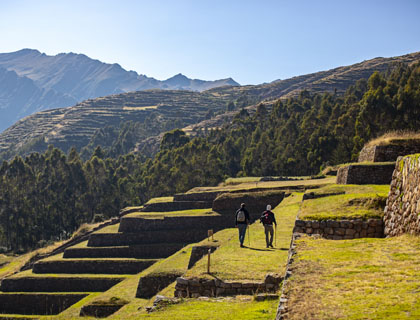
Chinchero Archaeological Site
Location: 28 km northwest of the city of Cusco (45 min by car).
Visiting Hours: Mon-Sun: 07:00 – 17:00 hrs.
Ticket entry.
Chinchero was an important urban center that present exceptional lithic expressions due to the monumentality and development of its architecture. It was built by Tupac Inca Yupanqui in 1480 and is made up of a set of architectural spaces: pre-Columbian mural structures, enclosures, terraces, staircases, shrines, among others. There are also the remains of three temples called Titiqaqa, Pumaqaqa, Chincana, which are huge limestone outcrops carefully carved in the form of seats, stairways, cupboards and ducts.
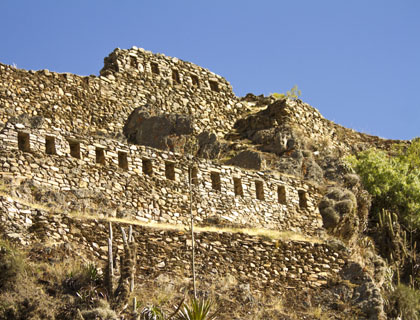
Ollantaytambo Archaeological Site
Location: 82.2 km to the northwest of the city of Cusco via Chinchero (1hr 45 min by car).
Visiting Hours: Mon-Sun: 07:00 - 17:00 hrs.
Ticket entry.
This Inca fortress is surrounded by walls and towers. Araqama Ayllu has a temple and is presumed to have been a sector set aside for worship and religion. Qosqo Ayllu was an urban sector with houses and terraces. The town of Ollantaytambo is renowned for the way in which its inhabitants preserve the traditions of their ancestors.
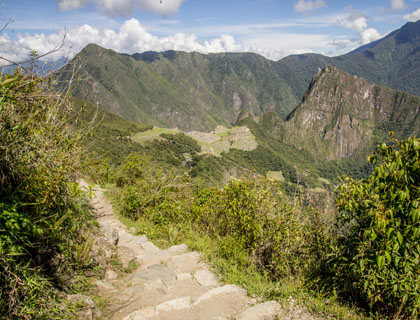
Inca Trail to Machu Picchu
Location: Begins 82 km along the railway to Machu Picchu.
The tour lasts four days and three nights.
It can only be undertaken though prior booking with registered travel agencies.
The section of Qhapaq Ñan (The Inca Trail) to Machu Picchu is one of the most traveled. It is also one of the most popular trekking routes in South America. Travelers pass 12 archaeological center along the journey, including Qoriwayrachina and Intipata. In addition to being an excellent test of stamina, the trail affords views of spectacular landscapes formed by gorges. Those who prefer a shorter hike can start at a point 104 km along the railway.
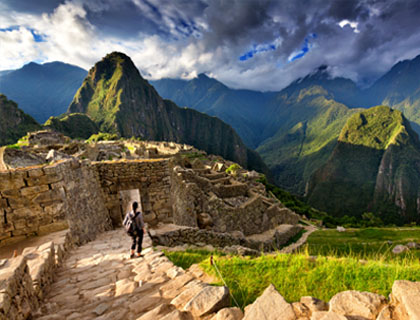
Machu Picchu Historical Sanctuary – Machu Picchu National Archaeological Park
Location: 110 km northwest of the city of Cusco in Machu Picchu Pueblo (4hr by train from Poroy station / 2hr by bus to Ollantaytambo and 2hr by train), then 8km to the llaqta or citadel (30 min by bus).
Visiting schedule: Mon-Sun: 06:00 - 12:00 and de 12:00 - 17:30 hrs.
Ticket entry.
Check availability at www.machupicchu.gob.pe.
Nestled between the mountains of Machu Picchu and Wayna Picchu, it is divided into two sector: one is the agricultural sector, composed of agricultural terraces...
View moreMachu Picchu Historical Sanctuary – Machu Picchu National Archaeological Park
Location: 110 km northwest of the city of Cusco in Machu Picchu Pueblo (4hr by train from Poroy station / 2hr by bus to Ollantaytambo and 2hr by train), then 8km to the llaqta or citadel (30 min by bus).
Visiting schedule: Mon-Sun: 06:00 - 12:00 and de 12:00 - 17:30 hrs.
Ticket entry.
Check availability at www.machupicchu.gob.pe.
Nestled between the mountains of Machu Picchu and Wayna Picchu, it is divided into two sector: one is the agricultural sector, composed of agricultural terraces and granaries; the second and main is the llaqta or citadel, formed by palaces, temples, some houses and food storage facilities, but mainly building with a clearly ceremonial-religious function. Some of the most notable building are the Temple of the Sun, the Intihuatana and the Temple of the Three Windows.
Due to its great natural and cultural wealth, Machu Picchu is an area protected by the State and inscribed on the UNESCO World Heritage List. With an extension of 37,302 hectares (92,175 acres), it is one of the areas with the greatest biodiversity in Peru and houses more than 60 archaeological monuments articulated through a complex network of Inka Trails.
The surrounding landscape consists of a series of mountains with steep slopes or almost vertical sides, deep and very narrow gorges as well as snow-capped mountains more than six thousand meters high. The most outstanding is Salkantay Mountain (6271 meters), considered sacred by the Incas.
In 1902, Agustín Lizárraga, a Peruvian, was the first to arrive at Machu Picchu. Nine years later, in 1911, Hiram Bingham brought the Inca citadel to the attention of the world. Since 1983, Machu Picchu has been listed by UNESCO as a Mixed Heritage of Humanity, and in 2007 it was chosen as one of the seven new wonders of the world.
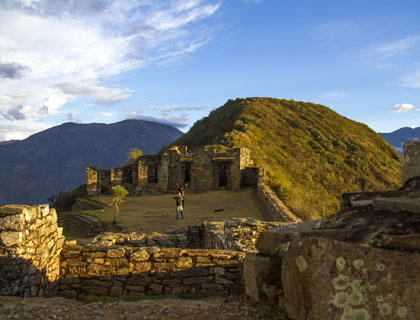
Choquequirao Archaeological Site
Location: Via Cachora: 167 km northwest of the city of Cusco (3hr by car) to the district of Cachora (Apurimac), then 30 km on foot. Via Huanipaca: 200 km northwest of the city of Cusco (4hr 30 min by car) to the Tambobamba district of Huanipaca (Apurimac), then 17 km on foot.
Ticket entry.
Choquequirao means ‘cradle of gold’ in Spanish and was one of the last holdouts of the Incas in the Vilcabamba Valley, who took refuge there from 1536. The park is a 3033 meters above sea level on a green mountain...
View moreChoquequirao Archaeological Site
Location: Via Cachora: 167 km northwest of the city of Cusco (3hr by car) to the district of Cachora (Apurimac), then 30 km on foot. Via Huanipaca: 200 km northwest of the city of Cusco (4hr 30 min by car) to the Tambobamba district of Huanipaca (Apurimac), then 17 km on foot.
Ticket entry.
Choquequirao means ‘cradle of gold’ in Spanish and was one of the last holdouts of the Incas in the Vilcabamba Valley, who took refuge there from 1536. The park is a 3033 meters above sea level on a green mountain.
This place impresses with the majesty of Inca architecture with platforms, squares, enclosures, large walls with niches and other constructions. Due to its rich flora and fauna, Choquequirao is considered a Regional Conservation Area by the National System of Protected Areas by the State (SERNANP), with an extension of 103,814.39 hectares.
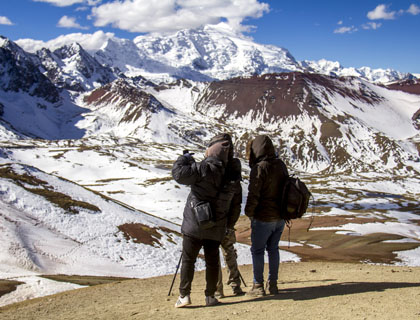
Ausangate Mountain
Location: 120 km to the southeast of the city of Cusco (3hr by car) to the community of Tinke, from where the trekking route of 5 days/4 nights begins.
Each August the inhabitant of the Andes make offerings to this mountain, which they consider sacred. At other times of the year, it attracts trekking and mountaineering enthusiasts who take advantage of the adventure discover beautiful lagoon such as Sibinicocha and to appreciate camelids and condors in the midst of their natural habitat.
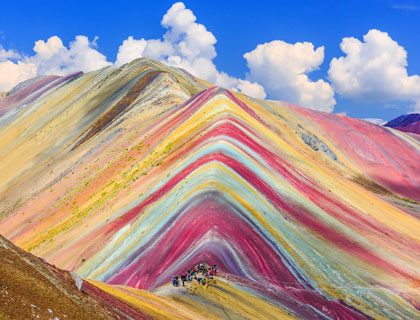
Vinicunca or Rainbow Mountain
Location: Via Pitumarca: 1369 km to the southeast of the city of Cusco, with the final 7 km undertaken hiking towards the mountain. Via Cusipata: 101,1 km to the southeast of the city of Cusco, with the final 4 km undertaken hiking towards the mountain.
Ticket entry.
Mount Vinicunca, located in the Vilcanota mountain range and beside Mount Ausangate, has a natural coloring due to the presence of eroded sedimentary stones. The most striking aspects is the way in which the stones have combined to form a series of color.



